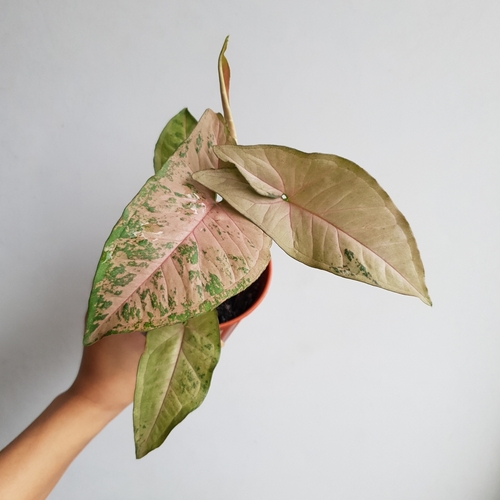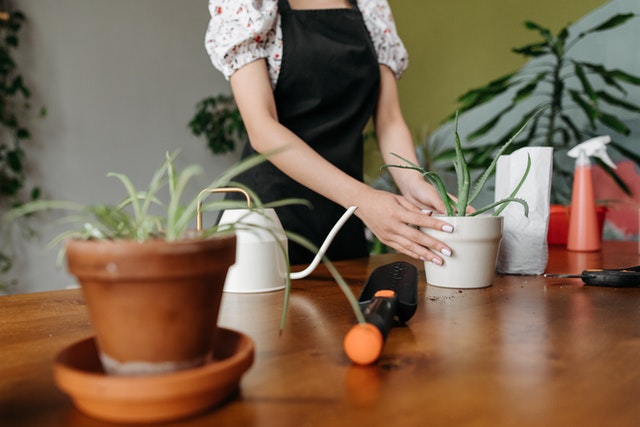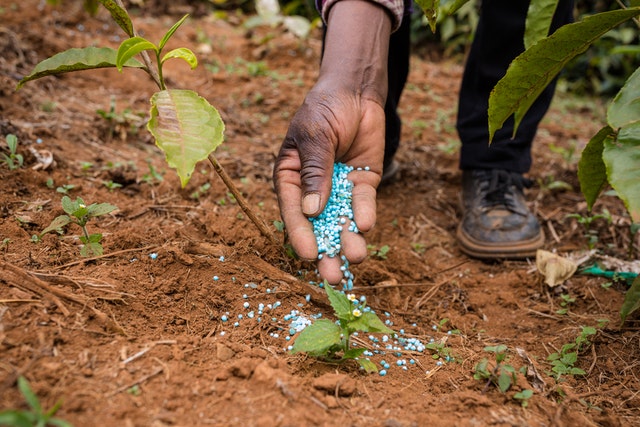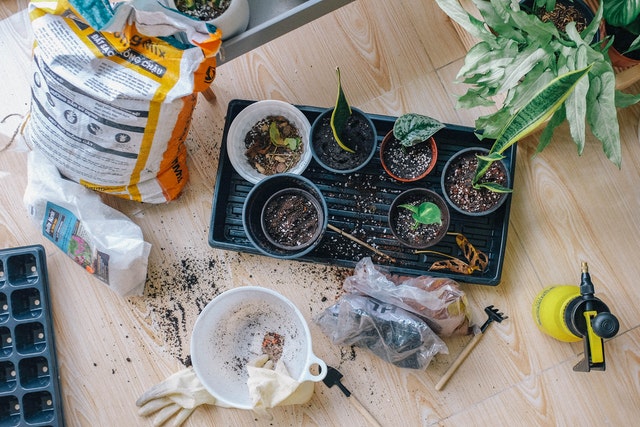Who doesn’t like a mix of different colors in their houseplants! The Pink Flecked Syngonium is one such plant with a gorgeous pink color that adds a contrast to your existing green leafy vegetation. The young leaves of this plant are simple with an arrowhead shape.
They grow into pink foliage with compound leaves and elliptic leaflets. Many people place them indoors to enhance the beauty. However, it is essential to take proper care of the plant. Let’s tell you in detail how to care for Pink Flecked Syngonium to enjoy its elegance for a long time to come.
In this guide, we will discuss the best practices for growing and caring for Pink Flecked Syngonium, including soil, watering, fertilizing, and pruning tips.
Related posts:
- Philodendron Atabapoense Plant, Grow & Care Guide 2023
- Gabby Philodendron Plant, Grow & Care Guide 2023
- Philo Jungle Boogie Plant, Grow & Care Guide 2023
What is Pink Flecked Syngonium Plant?

The Pink Flecked Syngonium is incredibly easy to propagate, adds a charm to your home garden, and does not require much maintenance. It is typically called the Goosefoot plant or the Arrowhead vine because of its leaf shape. The leaves are in a pretty heart shape with a green pattern.
The flowers rarely show inside, but they are adored for their subtly-colored foliage. These vines are used inside homes to add an aesthetic vibe and indirect sunlight is best to keep them in good shape and color.
They often extend and spread vigorously, reaching up to 6 feet high and 2 feet wide. However, you can give them a compact shape by pruning them appropriately. Your plant may turn green when you leave the plant in the shade for a long time. You can retain its pink color by giving it adequate, indirect sunlight.
Origin and Classification
The scientific name for Pink Syngonium is Syngonium podophyllum. It belongs to the Araceae family and Syngonium Schott genus. It is commonly known as the Arrowhead vine, Goosefoot plant, and American evergreen.
This plant originates from Mexico, Brazil, Bolivia, Ecuador, and West Indies. It is found widely in Middle America, North America, South America and, the Caribbean.
Features of Pink Flecked Syngonium Plant
1. Height
The Pink Syngonium vines are fast growers and can reach as high as 3 to 6 feet. It can be quite difficult to tame them as they grow significantly in width as well. You can prune them to give a compact shape for better aesthetics.
You may let it grow when grown outside. Keeping it inside will require you to ensure that it does not proliferate aggressively.
2. Leaves
The leaves of this plant have a pretty pink color giving it a divine look. It distinguishes the Pink Flecked Syngonium from other surrounding plants. The leaves are simple, arrowhead-shaped. They mature into compound leaves with elliptic leaflets. The pink leaves have a green pattern spread over them gorgeously.
3. Varieties
Syngonium podophyllum is the most widely cultivated species of the genus and comes in multiple varieties. There are over thirty species of the Syngonium plant. Each of them has the same charm while offering a wide array of patterns and hues.
Some Syngonium plants include Pink Schott, Pink Perfection, Red Heart, Pink Yellow, Neon Tethra, Pink Margarita, etc.
4. Special Uses
While you may think that the Pink Flecked Synogonium is only used to beautify a space, it is more than just ornamental plant. Pink Syngonium helps cleanse the surrounding air and acts as an anti-pollutant. It also reduces indoor air pollution by minimizing harmful components like xylene, benzene, toluene, and other volatile organic compounds.
Basic Care of Pink Flecked Syngonium Plant

Many people believe that this royal-looking, beautiful pink plant must be too difficult to maintain. But do not let its royalty fool you. It is as easy to maintain as gorgeous as it looks. You can easily keep the Pink Flecked Syngonium in your house without worrying.
Yet, there are a few basic needs that you must take care of to enjoy the plant in its full glory. Let’s tell you about the care of Flecked Syngonium plant.
1. Size & Growth
Pink Flecked Syngonium thrives quite quickly and reaches up to 6 feet tall indoors with a 2 feet width. Some varieties are also reported to grow as high as 65 feet. However, it might not be possible when keeping the plant indoors. Pruning helps keep it to the required size.
2. Light Requirements
This evergreen plant does not appreciate too low or too much sunlight. Some varieties can survive in low light, while others may lose their color without enough light.
Those with a greenish hue can live well in little light, whereas pink or white-colored plants require bright indirect sunlight. The Pink Syngonium grows the best in indirect sunlight.
You can easily notice that your plant requires more light when the vibrant colors begin to fade. The vines also have fewer leaves, indicating the need for sunlight. Though, you must remember that keeping them in full sun will also kill them.
3. Water Requirements
Taking care of the plant’s water needs is one of the most critical factors of Pink Flecked Syngonium Care. The plant is moderately drought-resistant and may go a few days without water. Yet, long periods of drought can dry the leaves and turn them brown.
It is recommended to water the plant adequately throughout the growing season. Water the Syngonium plant thoroughly after the topsoil gets about 70% dry. It will prevent overwatering and keep your plant alive. Also, you can revive your plant by misting and watering when it begins to dry.
You might want to avoid tap water as the chemicals may harm the plant. You can instead opt for rainwater or filtered water for your evergreen vine. Water the plant properly, including the roots.
4. Soil Requirements
Arrowhead vines prefer an acidic soil compared to an alkaline environment. They grow better in well-drained, rich soil of pH 5.5 to 6.5. Choose a soil mix with peat moss and perlite to accelerate growth while you ensure optimal water levels. Adding these components to the soil help mimic the natural habitat.
5. Temperature & Humidity
Syngonium plants are surprisingly quite tolerant of an extended range of indoor temperatures. They proliferate the best at 60-85F (15-30C) and survive in low temperatures. However, it is best to keep the temperature above 50F (10C).
Keeping the plant in the window for a few hours is better to offer indirect sunlight. Avoid leaving it by the window for a long time if you live in a warm country. Extreme temperatures will lead to stunted growth of the plant.
They are among the few plants that like higher humidity, around 60% – 70%. If your region is not that humid, you may use a humidifier to facilitate growth. Misting the leaves with distilled water and wiping them twice a week with damp cloth help remove dust to improve humidity.
6. Drought & Disease Resistance
The plant is moderately drought-resistant. But, it cannot go many days without water. The leaves will lose their color and become dry.
Furthermore, the most common disease affecting such plants is root rot. It occurs when you do not water the plant correctly. It can develop in soggy and poorly-drained soil. Thus, you must ensure well-drained soil in the Pink Syngonium pot by poking holes around the pot if needed.
7. Fertilizing

As we mentioned, these vines are easy-to-grow and quite low maintenance. You do not have to fertilize them often to boost growth. However, adding a little bit of diluted fertilizer every month may improve development. Select a water-based fertilizer and add it to the plant after watering. Do not apply fertilizer in fall or winter as the plant is dormant.
8. Pruning Requirements
Pruning is essential to make your Pink Flecked Syngonium presentable. Pruning and trimming help keep it in a compact shape to enhance aesthetics. Prune and trim your plants during the period of high growth, i.e., spring.
How to Propagate Pink Flecked Syngonium Plant
You can propagate Pink Syngonium in two ways; stem cutting and water propagation. Here’s how to propagate Pink Syngonium.
Stem Cuttings
Step 1
Cut five to seven inches long stem tips of the plants
Step 2
Remove the extra leaves from the cuttings
Step 3
Add the cuttings to slightly moist soil
Step 4
Plant in an area with at least two nodes to help the roots develop
Step 5
Water the stem tip cuttings appropriately to facilitate growth
Step 6
Provide optimal temperature, water, soil, humidity, and light when the roots grow, and leaves appear.
Step 7
It is the easiest method to propagate Pink Syngonium
Water Propagation

Step 1
Get a few cuttings from the plant having a few nodes and leaves
Step 2
Add the stem cuttings to a water container
Step 3
The noted must be immersed in the water completely
Step 4
Wait for a month to see roots
Step 5
Transfer the plant to the soil when the roots develop
Common Problems Caring For Pink Flecked Syngonium Plant
Two common problems caring for the Pink Flecked Syngonium include pests and diseases. You can avoid and control them to keep your plant in good shape.
1. Pests
The plant is typically resistant to pests. However, you may sometimes see mealybugs or spider mites that suck the plant sap. These pests lead to the death of your plant. You can save your Syngonium by removing dead leaves and using pet infestation soaps.
2. Diseases
The plant does not invite a number of diseases except root rot. It can result from overly soggy soil. You can save your plant by using a well-drained soil and planting in a pot with holes.
Outro
The Pink Flecked Syngonium is a beautiful plant with pink leaves. It is easy to grow and thrives well in moderate temperatures and well-drained soil. It should be kept in indirect sun to keep the leaves pink without burning them. Make sure to get rid of infestation and diseases in time to improve the lifetime of your plant.
Freqiently Asked Questions
How do I keep my pink Syngonium pink?
Your plant leaves will stay pink when given an adequate amount of sunlight. Direct sun will burn their leaves, whereas complete shade turns the leaves green.
How do you take care of a pink splash Syngonium plant?
The pink splash Syngonium plant requires adequate water, light, and humidity to grow the best. Keeping it in indirect sunlight makes it vibrant and gorgeous.
Where do I put pink Syngonium?
Make sure to place your pink Syngonium on the North-facing or East-facing windowsill. You can also grow them in hanging baskets. Hang them anywhere they can receive indirect sunlight and high humidity.

Hey, I’m Lisa and I’ve been an avid gardener for over 30 years. I love writing, talking and living in the garden! Feel free to connect with me on my socials below

